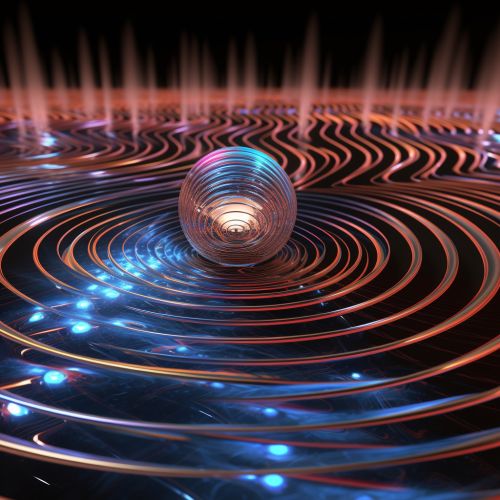The Physics of Quantum Magnetism
Introduction
Quantum magnetism refers to the magnetic properties of certain materials at quantum scales. It is a branch of quantum physics that deals with the quantum mechanical behavior of magnetic moments in materials. Quantum magnetism is a complex and fascinating field that involves the study of quantum spin systems, quantum phase transitions, and the quantum Hall effect, among other phenomena.


Quantum Spin Systems
In the realm of quantum magnetism, the concept of quantum spin is fundamental. Quantum spin systems are collections of quantum particles that possess a property called spin. This property is a form of intrinsic angular momentum that is quantized, meaning it can only take on certain discrete values. The quantum nature of spin leads to a variety of interesting and counterintuitive phenomena, such as spin entanglement and quantum superposition.
In a quantum spin system, the spins of individual particles can interact with each other, leading to complex collective behaviors. These interactions can be described by a Hamiltonian, a mathematical operator that represents the total energy of the system. The nature of the spin-spin interactions can vary widely depending on the specific system under consideration, leading to a rich variety of physical phenomena.
Quantum Phase Transitions
Quantum phase transitions are another key concept in the study of quantum magnetism. Unlike classical phase transitions, which occur at a specific temperature and are driven by thermal fluctuations, quantum phase transitions are driven by quantum fluctuations and can occur at absolute zero temperature.


Quantum phase transitions are associated with a change in the ground state of a quantum system, which is the state of lowest energy. This change in the ground state is typically accompanied by a change in some observable property of the system, such as its magnetization. Quantum phase transitions play a crucial role in many areas of condensed matter physics, including the study of high-temperature superconductors and quantum spin liquids.
Quantum Hall Effect
The quantum Hall effect is a quantum mechanical version of the classical Hall effect, which describes the generation of a voltage difference across an electrical conductor placed in a magnetic field. The quantum Hall effect was discovered in two-dimensional electron systems at very low temperatures and strong magnetic fields, and it has since been observed in a variety of other systems.
The quantum Hall effect is characterized by the quantization of the Hall conductance, which means that it takes on only certain discrete values. This quantization is a direct consequence of the quantum mechanical nature of the electrons in the system. The quantum Hall effect has far-reaching implications for our understanding of quantum physics and has also found practical applications in precision measurements of fundamental constants.


Quantum Spin Liquids
Quantum spin liquids are a state of matter that can occur in quantum spin systems. In a quantum spin liquid, the spins of the particles remain in a disordered state even at absolute zero temperature, in contrast to conventional magnetic materials, where the spins align to form a magnetically ordered state at low temperatures.
Quantum spin liquids are characterized by long-range quantum entanglement and the absence of magnetic order. They are a topic of intense research due to their potential applications in quantum computing and other areas of quantum technology.


Conclusion
Quantum magnetism is a rich and complex field that touches on many areas of quantum physics. Its study has led to the discovery of new states of matter, deepened our understanding of quantum mechanics, and opened up new avenues for technological development. As research in this field continues, we can expect to uncover even more fascinating phenomena and potential applications.
